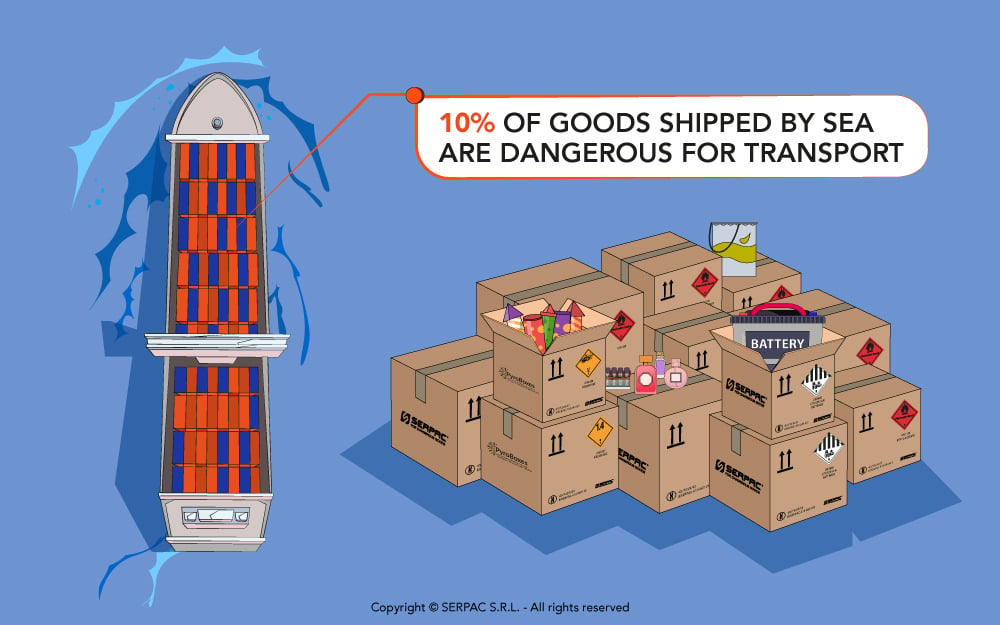IMDG and undeclared dangerous goods

Transport of goods in large quantities occurs 90% by sea, of this percentage 10% are dangerous goods to be shipped. Among the most known dangerous goods are explosives, chemicals, perfumery products, paints, and lithium batteries.
The transport of dangerous goods is regulated by specific international agreements that differ according to the shipping modality, but nevertheless have in common the goal of shipping safely. In the specific case of transport by sea, the relevant regulation is the IMDG Code.
Let's start with a simple concept, a shipment can only be said to comply with the regulations if it meets the specific packaging and labelling, marking and placarding provisions required by the regulations.
The cost of shipping - strictly understood as the cost of transportation - dangerous goods in compliance with the regulations is undoubtedly higher than for a standard shipment, and it is for this reason that in order to save money on shipping, the goods actually transported are often not declared.
Properly packing and reporting cargoes of dangerous goods is a shipper's responsibility and duty, this would reduce the number of cargo ship accidents resulting in less loss of life (crew), property (cargo) and at the same time damage to the environment.
And precisely about environment, in an article we spoke about the loss of containers in the oceans. A (truly frightening) number of containers floating in the oceans and for which actually the proper reporting becomes crucial.
In fact, for the transport of dangerous goods by sea IMDG, there are different rules regarding the stowage and positioning of cargo and containers, which, in case of non-declaration or misdeclaration, will not be able to be respected thus drastically increasing the danger of accidents.
In the U.S., non-profit organizations are being active to conduct more and more security inspections of containers at customs and borders to detect "cargo fraud" and consequently reduce the rate of dangerous cargo ship accidents.

